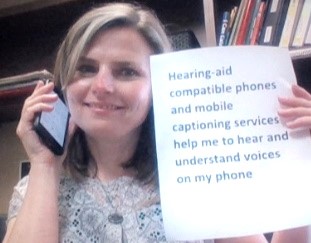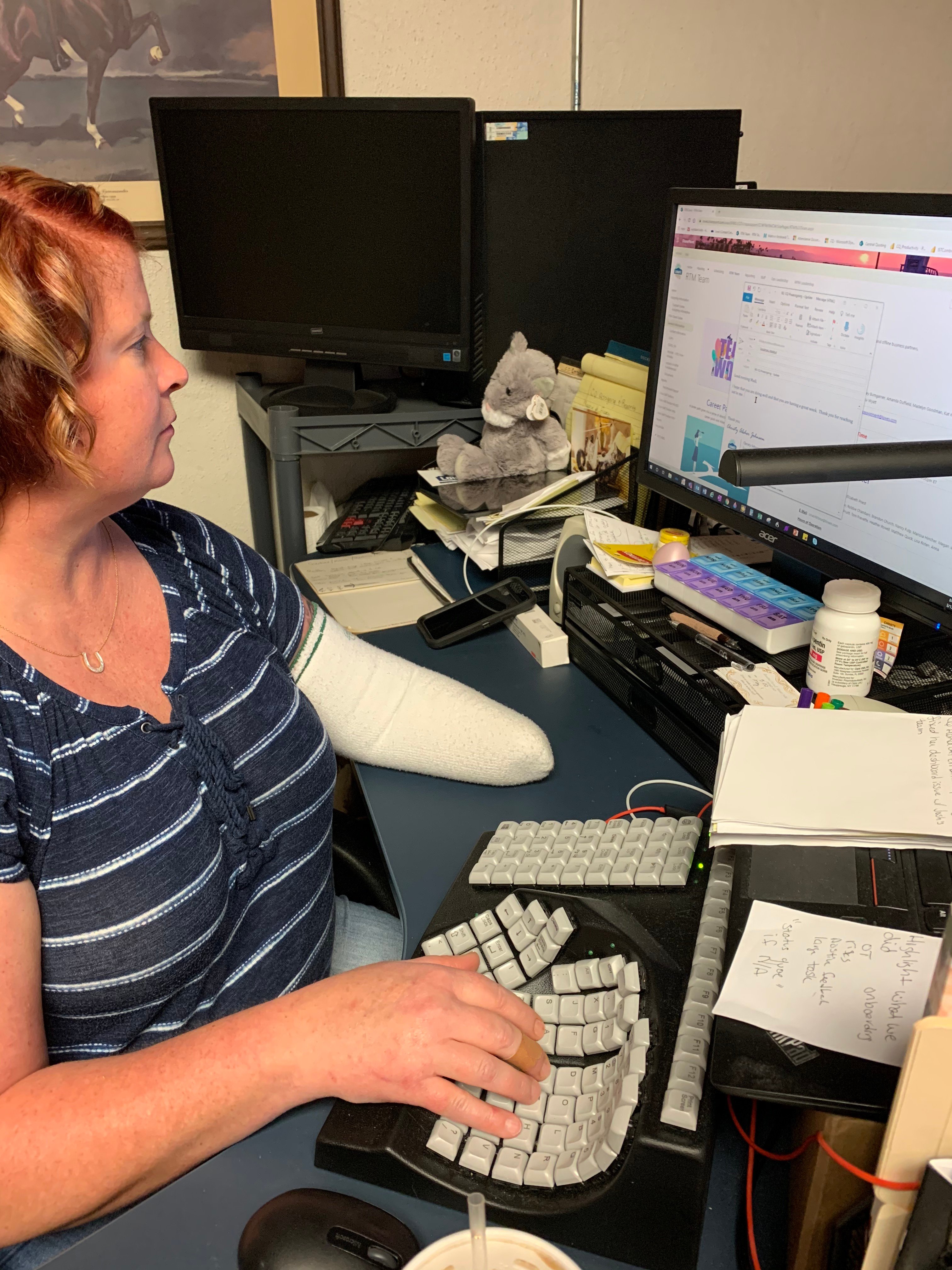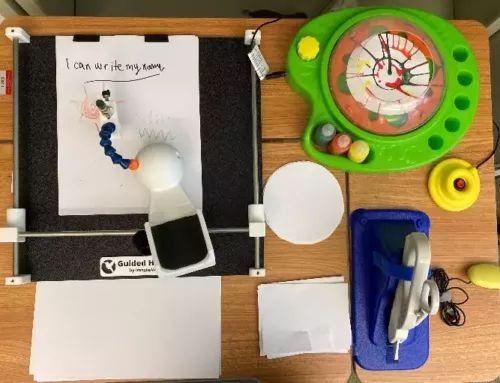Celebrating AT Awareness and Employment

April 6th, 2022, is National Assistive Technology Awareness Day! Congress has designated this day to recognize the role assistive technology (AT) and AT services play in the lives of individuals with disabilities. To extend the celebration, each day this week AT3 Center is highlighting AT for different purposes. Please share and consider telling your own story. Help celebrate #ATAwarenessDay!

First, what is assistive technology (AT)?

AT is any item, device, or software used to maintain or improve the independence and functioning of persons with disabilities and older adults. AT devices can be “low tech,” such as a built-up handle on a spoon to improve the ability to grasp, to “high tech,” such as computers controlled with eye gaze. AT includes the services necessary to get and use the devices, including assessment, customization, repair, and training.
How does assistive technology support Employment?

Every day, assistive technology is being used by persons with disabilities in all employment categories. There are amplified stethoscopes for medical personnel with hearing impairments, voice-recognition software for controlling a computer’s operating system and writing with speech, hand-control modifications for driving tractors and combines, and talking tape measures for workers with visual impairments. AT makes it possible for individuals with disabilities to accomplish tasks they could not do ordinarily or do what they can longer. AT often supports stamina and pain reduction in the workplace, such as a workstation used while laying prone. Under the Americans with Disabilities Act (ADA), employers are required to provide reasonable accommodations, including AT, for employees with disabilities. In their study, “Benefits and Costs of Accommodations,” the Job Accommodation Network (JAN) finds that most employers who report a cost to accommodations show a one-time expenditure of $500 or less.
What role do AT Act Programs play?
AT Act Programs assist individuals with disabilities of all ages (including veterans and older adults) to identify and acquire AT that supports their independence, safety, and personal goals. Programs serve AT-users directly and their family members, caregivers, educators, therapists, and employers. Anyone with a reason to learn about AT is welcome. Find your State or Territory AT Act Program.
An Employment story from North Carolina
“CJ” works for Lowes as a Workforce Supervisor. She met with staff from the North Carolina AT Act Program (NCATP) when she became concerned she could not perform the keyboarding function of her job with only one hand. NCATP staff members demonstrated three computer access options: 1) a keyboard designed for one-handed typing, 2) software for one-handed typing and 3) speech-to-text software. After reviewing her options, CJ borrowed the RH Maltron Keyboard. This uniquely shaped one-handed keyboard optimizes layout to minimize finger movement (placing the more common letters closer to the finger ‘home position’). She also trialed the speech-to-text software with a noise-canceling headset and microphone. CJ reported she was much more productive after using both the keyboard and software at her worksite. She and her employer have since requested information on how to purchase both options to keep CJ working.
Looking for an accessible PDF that explains AT for Employment and the services provided by AT Act Programs? Download Assistive Technology Is A Part Of Everyday Life: Employment
Monthly Blog Digest
Search the blog
State AT Program Blogs
California
Florida
Indiana
Kentucky
Louisiana
Maryland
Massachusetts
Michigan
Montana
North Carolina
North Dakota
Utah
State AT Program Blogs
The AT3 Center, the Association of AT Act Programs (ATAP), and the Administration on Community Living (ACL) make no endorsement, representation, or warranty expressed or implied for any product, device, or information set forth in this blog. The AT3 Center, ATAP, and ACL have not examined, reviewed, or tested any product or device hereto referred.








